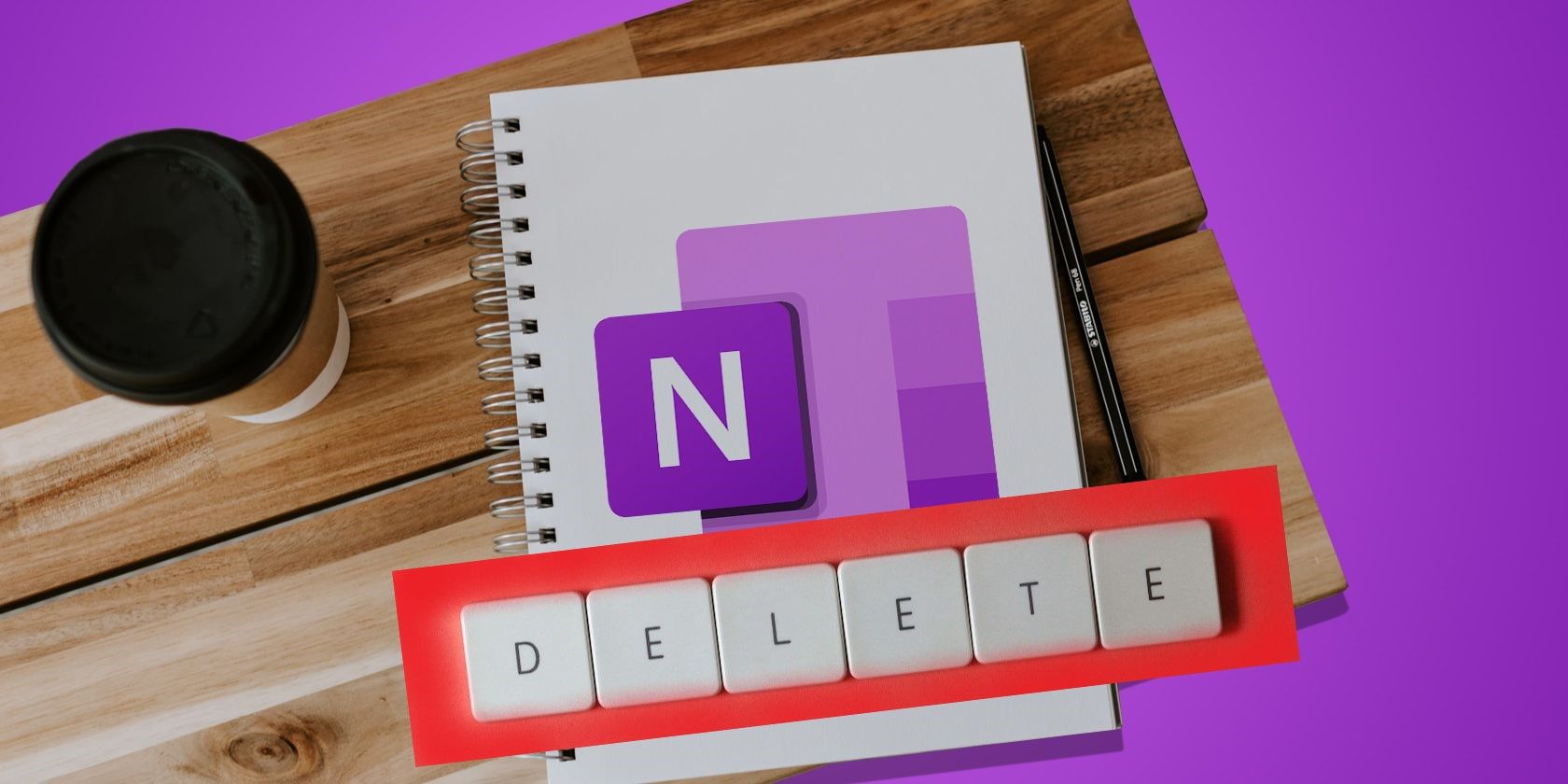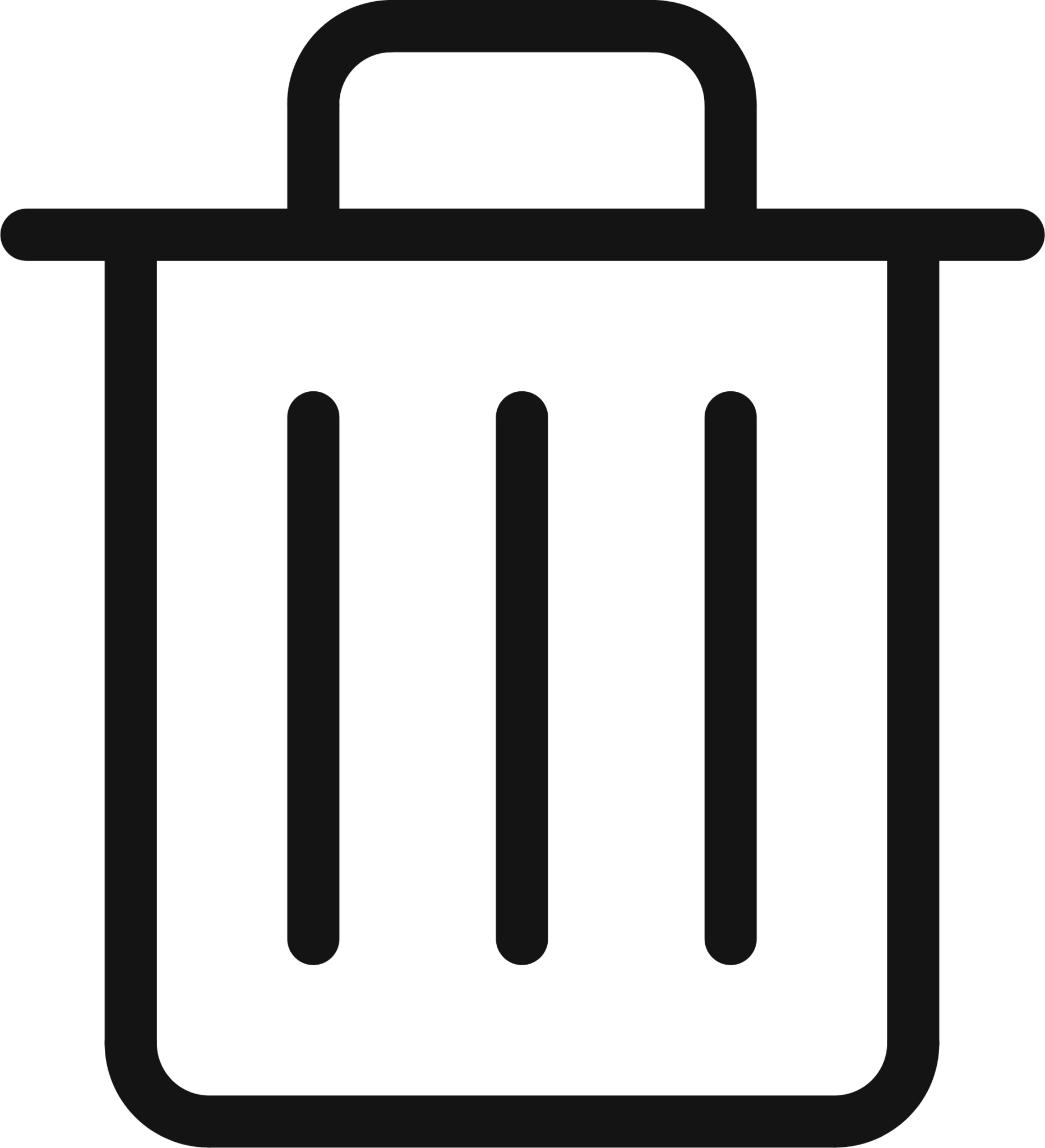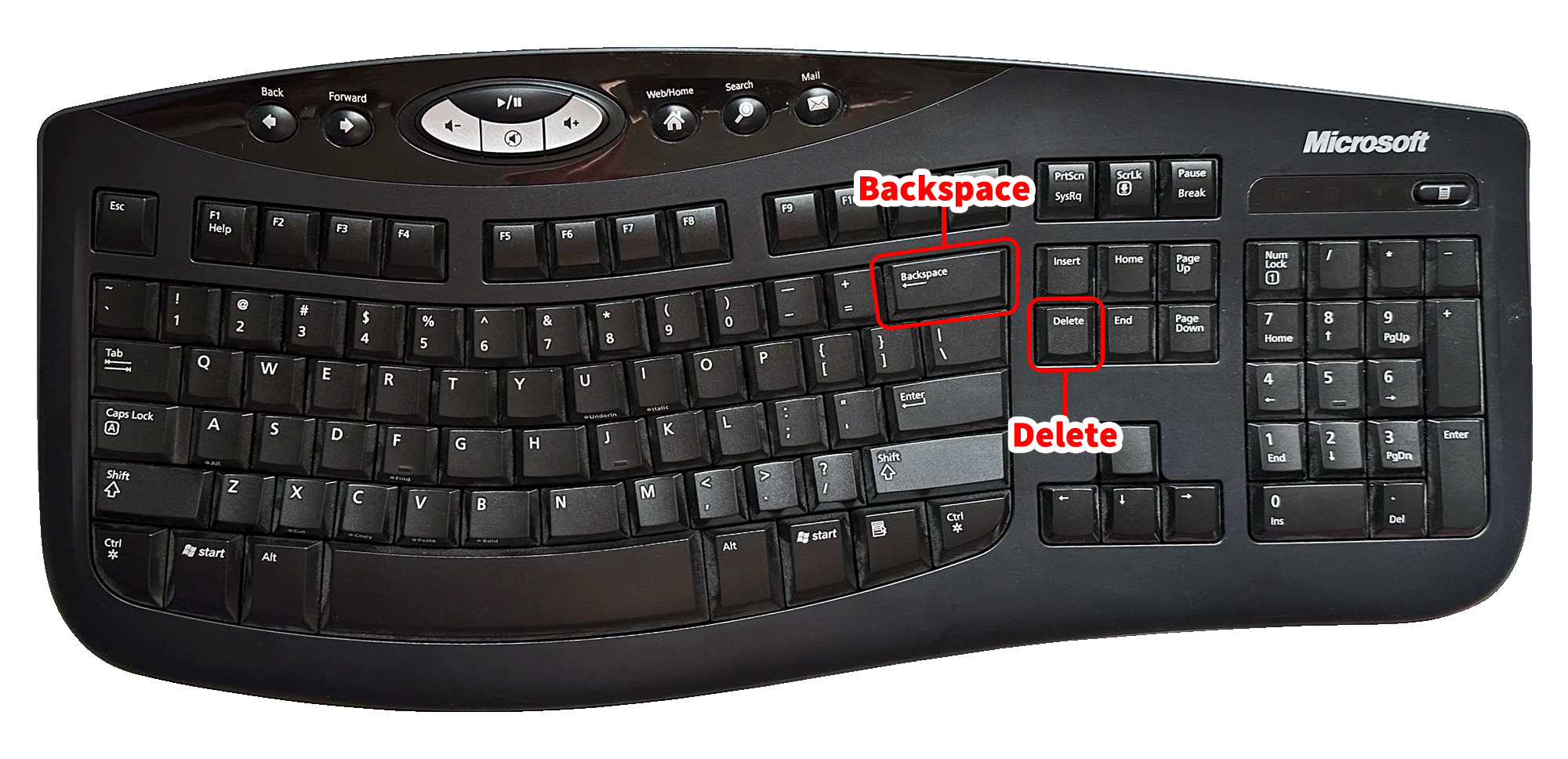Delete This - What You Should Know About It
It is pretty interesting how often we talk about getting rid of things in our digital lives. We might be cleaning up our computers, making space on our phones, or even just tidying up our web browsers. This idea of making things disappear, of removing what we no longer need or want, pops up in so many different ways, doesn't it? It's about keeping things neat and running smoothly, which is a bit like keeping your actual home tidy.
You see, whether you are trying to make an old program vanish from your computer or just want to clear out some old website visits, the basic goal is the same: to get rid of something. It is about taking back control of your digital space, making sure only what you truly use or want is around. This can feel quite freeing, actually, knowing that you have the power to decide what stays and what goes, so you can keep your digital tools working well for you.
And yet, there is also a fascinating phrase, "delete this," that has a few different meanings, depending on where you hear it. It can be a very specific technical instruction in the world of computer programming, or it might just be a playful shout in a video game. We are going to look at these different ideas, giving you a clearer picture of what people mean when they say "delete this," and how it applies to various parts of your daily tech interactions, as well as some more complex computer operations, apparently.
Table of Contents
- Clearing Out Digital Clutter - A Fresh Start
- Is Removing Apps from Windows Really Simple?
- What About Permanently Deleting Files?
- Understanding "Delete This" in Programming
- When Is It Okay to Use "Delete This" in C++?
- What Are the Risks of Using "Delete This"?
- The Other Side of "Delete This" - Culture and Cleanup
- How Does "Delete This" Show Up in Pop Culture?
- Clearing Your Browsing History - A Digital Cleanse
Clearing Out Digital Clutter - A Fresh Start
Having too many things on your computer can sometimes make it feel slow or just a bit messy. Getting rid of software you no longer use is a good way to give your machine a bit of a clean-up, you know? It helps free up room on your storage drive and can make your computer feel a little quicker, which is always nice.
For those who use Windows, getting rid of applications is, in fact, a pretty simple task. You have a few ways to go about it, depending on what feels most comfortable for you. It does not matter if you are someone who spends a lot of time with computers or just uses them for everyday tasks; the process is quite easy to grasp, so.
Is Removing Apps from Windows Really Simple?
Yes, it is, actually. You can start the process of getting rid of software right from your Start menu. Just find the application you want to make disappear, right-click on its name, and you will usually see an option to remove it. This is a very quick way to do things, especially for those applications you recently added or see often, you know.
Another common way to get rid of things is through your computer's settings. This area gives you a more complete picture of all the software installed on your machine. You can sort through them, pick the one you want to remove, and then tell your computer to uninstall it. This method is quite straightforward and offers a bit more control over what you are doing, apparently.
Then there is the Control Panel, which has been around for a long time in Windows. For many older software programs, this is still the best place to go to make them vanish. You simply open the Control Panel, look for the "Programs and Features" section, and there you will find a list of all the installed software. Just pick the one you want to remove and click the button to get rid of it. Both the settings menu and the Control Panel approaches are quite effective and easy to follow, really.
Sometimes, a program might not want to leave easily, or you might run into a small problem during the removal process. Windows often has some built-in tools or suggestions to help you sort out these little issues. It is usually a matter of following a few simple steps or looking up a quick solution online. Most of the time, getting rid of unwanted software is a very smooth operation, you know.
What About Permanently Deleting Files?
Beyond getting rid of software, you might also want to make certain files disappear for good. Usually, when you remove a file, it goes to the Recycle Bin, giving you a chance to bring it back if you made a mistake. But what if you are absolutely sure you want it gone forever? There is a quick way to do this, too, you know.
To make one or more files vanish from your computer without them ever seeing the Recycle Bin, you just need to pick them out first. Once they are selected, you can use a special set of keys on your keyboard to make them go away for good. This little trick sends them straight to the digital void, freeing up space and ensuring they are not easily recovered, so.
Understanding "Delete This" in Programming
Now, let's switch gears a bit and talk about "delete this" in a very different context: computer programming, specifically in a language called C++. This phrase has a very particular meaning here and can be a bit of a talking point among people who write code. It is a concept that lets an object, which is a kind of building block in programming, get rid of itself from the computer's memory, which is quite interesting, actually.
For a long time, using "delete this" in C++ has been seen as something you should probably avoid. There are some good reasons for this, as it can sometimes lead to problems like "memory leaks," where the computer holds onto memory it no longer needs, or "dangling pointers," which are like signs pointing to something that is no longer there. These issues can make a program unstable or even crash, you know.
Ideally, the "delete" instruction should not be used on the "this" pointer, which refers to the current object. However, there are times when it might seem like a solution, but if you do use it, there are some very important things you absolutely must keep in mind. It is a bit like walking a tightrope; you need to be very careful to avoid a fall, so.
One very important rule is that the "delete" instruction only works correctly for objects that were created using a specific method called "operator new." If an object was brought into existence using "new," then telling it to "delete this" might work as expected. But if it was created in any other way, trying to "delete this" can lead to unpredictable behavior, which means your program might do something completely unexpected or just stop working, apparently.
The core idea behind "delete this" is to allow an object to manage its own departure from memory. This is sometimes seen in more advanced programming setups, especially where it is not entirely clear who is responsible for an object's existence. By telling an object to "delete this," you are explicitly stating that the object itself is taking on the job of cleaning up after itself, which is a rather unique responsibility, you know.
When Is It Okay to Use "Delete This" in C++?
The C++ language has changed over time, and some of the rules around "delete this" have been clarified. For instance, in more recent versions of C++, it is considered a valid operation. You can even call "delete this" when an object is in the process of being destroyed, which is something that used to be a bit of a grey area. The rules in C++ don't stop you from doing this, so.
However, even though it is technically allowed and legal, it is still pretty rare to see "delete this" used in good programming practices. Most experienced programmers will tell you that while you *can* do it, it is usually not the best approach. There are almost always safer and clearer ways to manage memory in your programs, which is why it is often advised against, really.
A well-known set of answers for C++ questions points out that using "delete this" is okay as long as you are very, very careful. What does "careful" mean in this situation? It means you have to be absolutely, positively, one hundred percent certain that the object you are trying to "delete this" was created using a very specific kind of "new" operation, just plain ordinary "new," you know.
This means it should not have been created using "new[]" (which is for arrays of objects), or "placement new" (which puts an object in a specific memory spot), or if it is a local object that lives on the program's stack, or a global object, or even a part of another object. If it was not created with that simple "new," then using "delete this" is a big no-no, basically.
When the "delete" instruction is given, it first calls a special part of the object called its "destructor." This destructor is like the object's clean-up crew, doing any last-minute tidying up before the object vanishes. After the destructor has done its work, the "delete" instruction then gives back the memory that the object was using. This memory must have been set aside by the "new" instruction in the first place, too.
So, when an object performs "delete this," it is just the current object itself that is being removed from memory. There is nothing particularly fancy or out of the ordinary about how it is built; it is just standard C++ operations at work. The complexity comes from making sure all the conditions are met for it to work without causing problems, you see.
What Are the Risks of Using "Delete This"?
One of the main worries with "delete this" is what happens if the object was not created with "new." If you try to remove an object that was made in a different way, the computer might not know how to properly give back the memory, leading to errors or crashes. It is like trying to return something to a store that never sold it to you in the first place, you know.
Another concern is what happens after the object has deleted itself. Once "delete this" has been called, the object no longer exists in memory. If any other part of your program tries to use that object or its memory after it is gone, that can lead to serious problems. It is like trying to talk to someone who has already left the room; you are just speaking to thin air, so.
There are also specific situations, like with "static" member functions in C++. A "static" function does not belong to a specific object instance; it belongs to the class itself. Because of this, a "static" function does not have a "this" pointer to refer to an object. If you try to use "delete this" in a "static" function, the program simply will not compile, telling you that "this" is not available, which makes sense, really.
In some older systems, like COM objects, you might hear about a method called "release()" that ends up calling "delete this." This is a specific way those systems manage their objects, but it is a bit different from how you would typically handle memory in regular C++ programs. It shows that there are some very specialized cases where this kind of self-deletion is part of a larger design, you know.
The Other Side of "Delete This" - Culture and Cleanup
Beyond the technical world of programming, the phrase "delete this" has also found its way into popular culture and everyday digital life. It is not always about computer code or memory management; sometimes, it is just a simple, direct instruction to make something disappear, which is pretty common, you know.
For example, you might hear someone tell another person to "delete this" in reference to a social media post or a message. This is usually when something has been shared that someone regrets or finds embarrassing, and they want it gone right away. It is a quick way to ask for something to be removed from public view, basically.
The specific way "delete this" is often spelled and used online seems to have come from a video from a game called Gary's Mod. In this video, a player is buried alive by another player, and knowing that the person burying them is recording the game, the buried player shouts "delete this!" over and over again into the recording. This moment became quite memorable and spread around the internet, apparently.
There is even a podcast called "Delete This" hosted by Hank and Katherine Green. This show looks at the week's events through the lens of interesting or sometimes questionable social media posts. It uses the idea of "delete this" in a fun, cultural way, suggesting that some things might be better off unsaid or unshared, you know.
How Does "Delete This" Show Up in Pop Culture?
The phrase has become a sort of shorthand for "take that back" or "make it disappear from public record." It is a bit like a digital plea to undo something that has already been put out there. You see it in comments, memes, and even just casual conversations among people who spend time online, so.
It highlights the quick and sometimes regrettable nature of sharing things on the internet. Once something is out there, it is very hard to truly make it vanish completely. So, when someone says "delete this" in a cultural context, it often carries a sense of urgency or even desperation to remove something that should not have been shared in the first place, you know.
Clearing Your Browsing History - A Digital Cleanse
On a more personal level, "delete this" can also refer to cleaning up your own web browser. Your browser keeps a record of the websites you visit, the things you search for, and even little bits of information from those sites. Sometimes, you might want to clear this out for privacy reasons or just to keep your browser running a bit more smoothly, you know.
In browsers like Chrome, getting rid of your browsing history is a pretty straightforward process. You usually go to the top right corner of the browser window, find a menu that looks like three dots or lines, and then select an option that says something like "More tools" or "History." From there, you will find a choice to "Clear browsing data," which is what you are looking for, basically.
When you go to clear your browsing data, you can pick how much history you want to get rid of. You can choose to clear just the last hour, the last day, or even everything from "all time." You also get to choose what specific kinds of information you want to remove, such as your browsing history, cached images and files, or cookies. It gives you quite a bit of control over your digital footprint, so.
This act of clearing your browsing data is another way we use the idea of "delete this" in our daily lives. It is about making things vanish that you no longer want to keep a record of, giving you a fresh start online. It is a simple but powerful way to manage your personal information and keep your digital space feeling tidy, apparently.
Article Recommendations



Detail Author:
- Name : Chadrick Kub V
- Username : terry.breanna
- Email : craynor@gmail.com
- Birthdate : 1971-12-24
- Address : 41454 Tatyana Road Apt. 863 North Caseymouth, UT 96833
- Phone : +1.580.910.7345
- Company : Greenfelder-Lubowitz
- Job : Anesthesiologist
- Bio : Ut possimus qui expedita vero. Ullam quibusdam distinctio ut consequatur nihil. Laboriosam velit odio et. Impedit eum dolores consequatur sed nostrum vero eum et.
Socials
linkedin:
- url : https://linkedin.com/in/onie_hintz
- username : onie_hintz
- bio : Expedita voluptas explicabo rerum sunt cum.
- followers : 5807
- following : 2302
twitter:
- url : https://twitter.com/onie_id
- username : onie_id
- bio : Assumenda a voluptates itaque a. Odio et nam dolorem molestiae aut repudiandae. Voluptas veritatis rerum veritatis omnis.
- followers : 6984
- following : 1009
instagram:
- url : https://instagram.com/onie.hintz
- username : onie.hintz
- bio : Non quisquam amet est quasi. Aut voluptatem sint est ut nesciunt rerum.
- followers : 6010
- following : 2559
tiktok:
- url : https://tiktok.com/@oniehintz
- username : oniehintz
- bio : Delectus sunt eveniet vel ut dolore.
- followers : 6122
- following : 2206
facebook:
- url : https://facebook.com/hintz2009
- username : hintz2009
- bio : Aut suscipit ipsum eveniet dolor. Placeat laudantium nihil et omnis.
- followers : 4448
- following : 2951